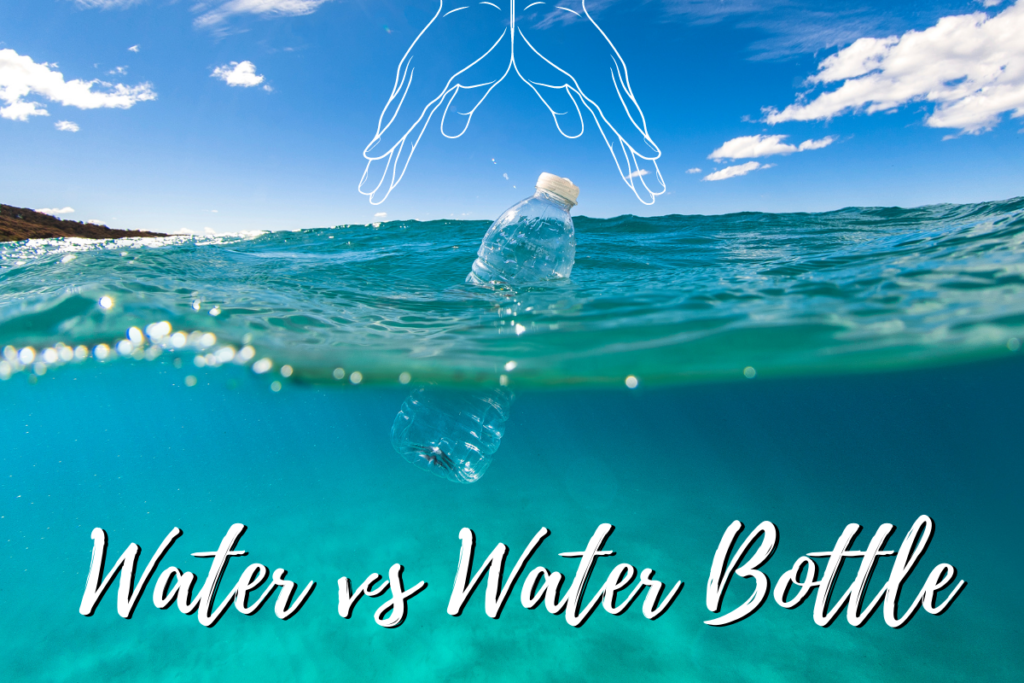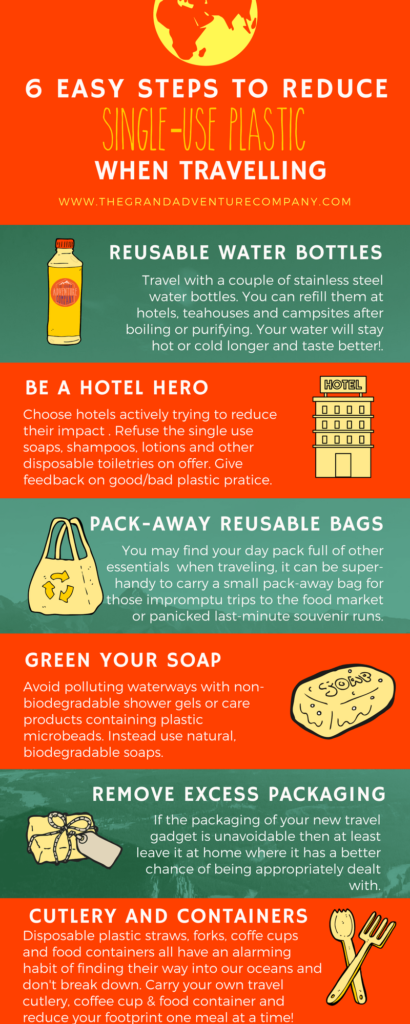
Water vs. Water Bottle
We have seen the images of beautiful beaches littered with plastic debris of every type, from water bottles, to flip flops, to rope to bags. We have felt revulsion when we see photos of sea birds, turtles and dolphins caught in plastic wrap, deformed, dead or about to die. The statistics overwhelm us – for example microplastics have been found in astonishing high percentages of bottled water and tap water around the world.
Plastics have transformed our lives, with phenomenal benefits. But the downside of their use has now become clear. A growing movement is addressing the problem at different levels. There are legislative initiatives – for example the state of California has banned single-use carryout bags. Plastic microbeads can no longer be used in the manufacturing of cosmetics and personal care products in both the UK and the USA. A plastic eating enzyme has just been discovered. Education and awareness is growing. For example Earth Day is 22 April, and the campaign for 2018 which will continue into 2020 is End Plastic Pollution. In our homes we are encouraged to find ways to reduce our use of single-use plastics.
What about when we travel? The most obvious single-use plastic culprit is a throw-away water bottle. The Adventure Trade Association (ATTA), of which Rowing The World is a member, just conducted a survey of tour operators. Despite most respondents expressing concern about single-use water bottles, most still supplied them to their guests. ATTA estimates that those 239 tour operators who answered the survey, alone, use “million single-use plastic water bottles annually, and spend $7.9 million per year. These 6.8 million single-use plastic water bottles weigh about 77 tonnes, the weight of 11,317 full household garbage bags (15 lbs average bags), with most of these bottles ending up in our landfills, decaying poorly in our environment or polluting our precious oceans, as only 9% of the world’s plastic is recycled.” Just think of all the other water bottles out there, given the millions of travellers.
Our guides will always ensure that our rowers have adequate, safe water to drink during our trips. But we are making some changes and ask our guests to be part of reducing single-use plastic waste. Please bring your own re-usable water bottle to take into the boat. Tap water is safe to drink where we travel, unless we tell you otherwise. Refill your bottles from the taps in the morning. We will have water supplies during the day, but as much as possible they will be large volume containers from which you can refill your bottle. Those big containers will be refilled with tap water. If you are concerned about water quality, consider a travel water filtration system, such as GRAYL, which is partnering with ATTA.
Here are some other ways to reduce plastic use when you travel:
- Bring your own shampoo, conditioner and body lotion in refillable containers rather than using the hotel amenities in little, single-use containers (although we do recognize that some are really lovely).
- Bring a little and lightweight shopping bag to put any purchases in should you buy souvenirs or snacks during the trip.
- Make sure that your dry sack for the boat is good quality and durable. Don’t rely on plastic bags to keep your things dry.
- If you do use a plastic bag, hold onto it and find ways to re-use it as often as possible.
- Bring your own utensils. You won’t need them during our trips, but for other travels, a reusable set of knife, fork and spoon is great for picnics.
- Oh, and when you are enjoying a gelato or ice cream, go for the cone, not the cup!
While the problem seems overwhelming at times, Rowing The World and our guests are all taking small steps to do our part. Hopefully we won’t have to choose between water and the water bottle in the future.
